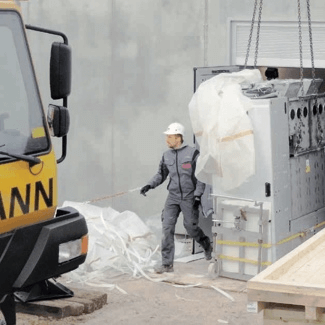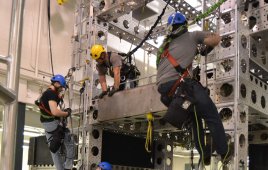From ABB newsletter
For decades, sulfur hexafluoride (SF6) has been the predominant insulation medium for switchgear due to its technical properties. ABB has been developing and deploying alternatives to this greenhouse gas on the path towards greater eco-efficiency and lower environmental impact and is now commissioning the world’s first pilot with a new eco-efficient gas mixture.

ABB has been developing and deploying alternatives to this greenhouse gas on the path towards greater eco-efficiency and lower environmental impact and is now commissioning the world’s first pilot with a new eco-efficient gas mixture.
With increased environmental awareness, products are increasingly being developed that have the lowest environmental impact possible. To this end, research is ongoing to find alternatives to even well-established technologies. This is the case with SF6, a man-made gas developed in the early 20th century which, due to its excellent properties for electric insulation and arc interruption is used extensively as the dielectric medium in high and medium-voltage switchgear.
In addition to enabling safe and reliable operation, it has also made it possible to significantly reduce the size of switchgear installations, and SF6 will remain as the main insulation medium for years to come. However, SF6 is a greenhouse gas and its lifecycle management requires careful handling and can entail substantial costs, particularly when decommissioning aging substations.
As demand for electricity rises worldwide, especially in emerging countries, demand for high-voltage switchgear is also rising. Thus, the search for alternative gases to SF6 for reduced environmental impact continues. A new fluoroketone-based gas mixture ABB has achieved a recent breakthrough with a new alternative to SF6 by commissioning the world’s first high- and medium-voltage pilot gas-insulated switchgear (GIS) bays with a new eco-efficient gas mixture.
This fluoroketone-based gas mixture is a chemical compound developed for switchgear applications in collaboration with 3M. The GIS bays for 24 kV and 170-kV ratings are installed in a pilot substation in Zurich operated by leading Swiss utility ewz, which was inaugurated on August 24, 2015.
 This new gas mixture contains Fluoroketone (C5-PFK), carbon dioxide (CO2 ) and oxygen (O2 ) for high-voltage GIS – Fluoroketone (C5-PFK), nitrogen (N2 ) and oxygen (O2 ) for medium-voltage GIS. This fluorinated molecule has a chemical composition that decomposes under ultraviolet light in the lower atmosphere. Therefore, the molecule’s atmospheric lifetime is extremely short (less than 15 days versus 3,200 years with SF6) and it decomposes into negligible quantities of CO2 that are not harmful to the environment. Because of this, its Global Warming Potential (GWP) is less than 1, even lower than CO2 (GWP=1).
This new gas mixture contains Fluoroketone (C5-PFK), carbon dioxide (CO2 ) and oxygen (O2 ) for high-voltage GIS – Fluoroketone (C5-PFK), nitrogen (N2 ) and oxygen (O2 ) for medium-voltage GIS. This fluorinated molecule has a chemical composition that decomposes under ultraviolet light in the lower atmosphere. Therefore, the molecule’s atmospheric lifetime is extremely short (less than 15 days versus 3,200 years with SF6) and it decomposes into negligible quantities of CO2 that are not harmful to the environment. Because of this, its Global Warming Potential (GWP) is less than 1, even lower than CO2 (GWP=1).
In addition, the fluorinated molecule is practically non-toxic, nonflammable and neither the substance itself nor the effects of decomposition would deplete the ozone layer. This GWP is almost 100% lower than that of SF6, without any compromise on equipment quality and reliability. The new gas mixture is the only one available so far, meets performance criteria after being type tested according to IEC standards and has a GWP <=1. In addition, as per the lifecycle analysis (LCA) of the product, deployment of high voltage GIS with this new gas mixture can lower CO2 equivalent emissions by up to 50 percent through the lifecycle of the equipment, the other half being attributable to raw materials, manufacturing, and thermal losses.
For the rest of the article: https://goo.gl/ck9zhw
Filed Under: Safety




